Looking to add some clean mass before shredding to a six-pack next summer? Fall is a great time to add variety to your diet, boost your nutrition, and keep things interesting by chowing down on fresh, seasonal foods.
1
APPLES
This year, resist the urge to coat your apples in cinnamon and shove them into a flakey crust. Instead, savor the flavor of this crisp fruit minus the added sugar and fat. While apples are available year round, they're considered a fall fruit. This time of year, you'll find most varieties in abundance. Red Delicious, Granny Smiths, Fujis, and Galas each have a unique taste and tartness all their own.
They're packed with nutrients, including antioxidants. In a 2004 USDA study of 100 foods, Red Delicious and Granny Smith apples ranked 12th and 13th highest in antioxidant concentration per serving size. Apples also boast a high fiber content to help reduce your risk of heart disease—one medium-sized apple with skin contains 4.4 grams, or 17 percent of your daily fiber.1 The fiber found in the apple tends to be especially good for blunting appetite and keeping hunger at bay, and it could also give you that extra push during a strenuous workout. An antioxidant called quercetin found in apples makes oxygen more available to the lungs.2 Hello endurance!
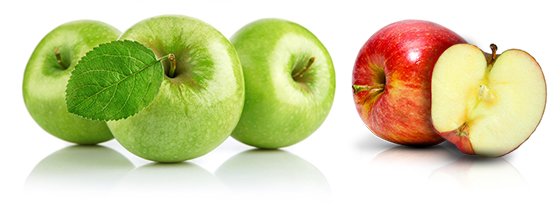
What to look for: Firm, brightly colored apples. A dull finish could mean your fruit's past its prime. Not sure if the apple you selected is fresh or just waxed to a high sheen? Flick it near the stem: a dull sound means it's ripe, and a hollow sound means it is dated.3
2
PUMPKIN
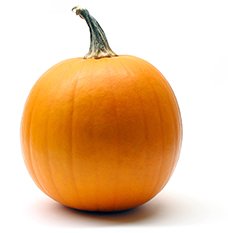
Bypass that sugar-filled pumpkin latte and go for the real thing. Pumpkin isn't just a Halloween decoration! It's actually an extremely nutritious gourd. Before you carve your Jack-o'-lantern, set a light inside, and place it on a stoop, consider incorporating it into your recipes. Pumpkin is a lower-calorie source of carbohydrates that serves up a healthy dose of beta carotene, potassium, and vitamin A—more than 200 percent of your recommended daily intake of the visual aid. When used in baking, a serving of pumpkin can help you reduce the amount of added fats called for in the recipe. Whether you're whipping up some pumpkin pancakes, bars, or muffins—or just spooning out some pumpkin goodness as a side dish—indulge in fall's signature squash. For an added treat, roast the seeds. Their high phytosterol content has been shown to reduce bad cholesterol (LDL).
What to look for: A heavy, dusty rind and a hard skin that doesn't leave an imprint when you press down. Seek out a solid, withered, dry stem. Any signs of moisture could mean the pumpkin is past its prime.4
3
BRUSSELS SPROUTS
While kids often toss up their nose at this "B" vegetable—and its alphabetical partner broccoli—this mini cabbage should not be overlooked. Whether roasted, boiled, steamed, or stir-fried, it packs a powerful nutritional punch. Brussels sprouts are a great source of vitamin C, vitamin K, and calcium, giving them an immunity-boosting punch. They may lessen your risk of depression, cancer, heart disease, and age-related vision and hearing loss. Got a bun in the oven? Eat up. Brussels sprouts are high in folate, which has been shown to limit birth defects when consumed at 600 micrograms daily.
What to look for: Bright green leaves and blemish-free sprouts that feel firm. Aim for sprouts with heads no more than an inch in diameter to avoid that cabbage taste.5
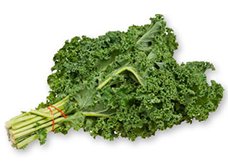
4
KALE
If you haven't already added kale to your diet, now is definitely the time. Kale ranks in as one of the healthiest foods you can plate, so eat up—especially while it's in season.
In addition to being a great anti-inflammatory—with one cup containing 10 percent of the daily recommended amount of omega-3 fatty acids—kale is full of cancer-fighting antioxidants, and is a fantastic source of Vitamin K, which is necessary for bone health and blood clotting. Kale contains more iron than beef. Since it is high in vitamin C and vitamin A, kale may help support your immune system and help you recovery quickly from all-out workout sessions.
What to look for: Dark green, frilly leaves with a fresh look. Avoid kale that's yellowing or wilted from age.6
5
CHESTNUTS
If you're like most people, your source of healthy fat from nuts largely comes from raw almonds or peanut butter. Before you delve into that tin of mixed nuts, consider reaching for variety and welcoming the chestnut. This nut offers a strong dose of vitamin B6, which helps provide immune system support and may also lessen PMS symptoms in women. It's also rich in dietary fiber and helps keep blood sugar levels stabilized and hunger levels down.
Watching your diet? Compared to other nuts, chestnuts are relatively low in calories. One cup contains only 350 calories (26 from fat), compared to the 854 calories (607 from fat) found in peanuts. Try blending chestnuts in a soup, using them as a topper in a baked squash dish, or adding them to a vegetable side dish.
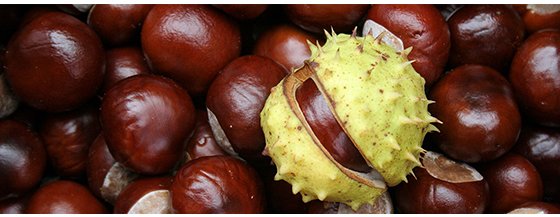
What to look for: Let your ears do the choosing. When it comes to chestnuts, pick those that don't rattle when shaken. They should appear shiny, hard, and unblemished.7
6
PARSNIPS
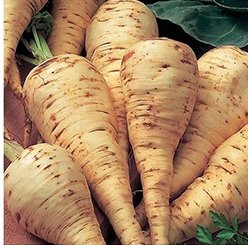
Sure, they're not an autumn staple, but don't let unfamiliarity with the parsnip scare you off. As their shape might suggest, these woody vegetables are related to carrots, so cook them the same way. Parsnips have a nice, nutty flavor that goes a long way toward enhancing any dish. They can be easily diced and added to rice, quinoa, barley, soups, stews, or even stir-fry.
Parsnips provide 6 grams of dietary fiber per 100 calorie, one cup serving, so, if you're struggling to meet your daily fiber intake, pick parsnips.
What to look for: Shop for parsnips as you would carrots. Aim for small to medium-size, blemish-free, smooth, firm parsnips with white roots.8
7
PEARS
Pears offer a sweet and slightly soft texture and are one of the most hypo-allergenic fruits you can consume, so they're well tolerated by just about everyone. There are thousands of varieties of pears grown all over the world, from the rough-skinned Bosc to the bright green or crisp red Barlett. Pears are a fantastic source of vitamin C—with one large pear offering up 16 percent of your daily value of Vitamin C and providing four grams of fiber per serving. They can be eaten by hand, poached, or baked with cinnamon and spices.
What to look for: Matte skin might not sound ideal, but with pears, it's a good indicator of their ripeness. Look for pears that are bruise free and firm.9
8
RUTABAGA
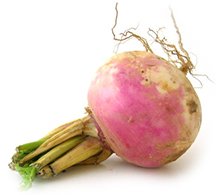
While it's not exactly a looker, the waxy rutabaga is one root vegetable you shouldn't miss. This cruciferous vegetable, which peaks in September, is sometimes called "yellow turnip." It's low in calories, coming in at just 53 calories per one cup serving, and provides a decent dose of dietary fiber at 3.2 grams per cup. Rutabagas are also a rich source of Vitamin C, Vitamin B6, calcium, and magnesium.
If you're looking for a lower-carb, lower-calorie side dish, prepare a rutabaga mash with some chicken broth and grass-fed butter. You'll undoubtedly put potatoes to shame.
What to look for: When it comes to rutabagas, the smaller they are, the sweeter they are. Choose rutabagas 3-5 inches in diameter and that feel firm, smooth, and heavy. Make sure there are no cracks or soft spots.10
REFERENCES
- http://www.mayoclinic.com/health/high-fiber-foods/NU00582
- http://www.huffingtonpost.com/eatingwell/health-benefits-of-apples_b_966110.html#s364122&title=Exercise_Extender
- http://www.realsimple.com/food-recipes/ingredients-guide/apples-00000000039257/index.html
- http://www.realsimple.com/food-recipes/ingredients-guide/winter-squash-00000000039373/index.html
- http://www.realsimple.com/food-recipes/ingredients-guide/brusselsprouts-00000000039270/index.html
- http://www.realsimple.com/food-recipes/ingredients-guide/kale-00000000039321/index.html
- http://www.canadianliving.com/food/cooking_school/all_about_chestnuts.php
- http://www.realsimple.com/food-recipes/ingredients-guide/parsnips-00000000039342/index.html
- http://www.realsimple.com/food-recipes/ingredients-guide/pears-00000000039346/index.html
- http://www.realsimple.com/food-recipes/ingredients-guide/rutabaga-00100000062659/index.html

No comments:
Post a Comment